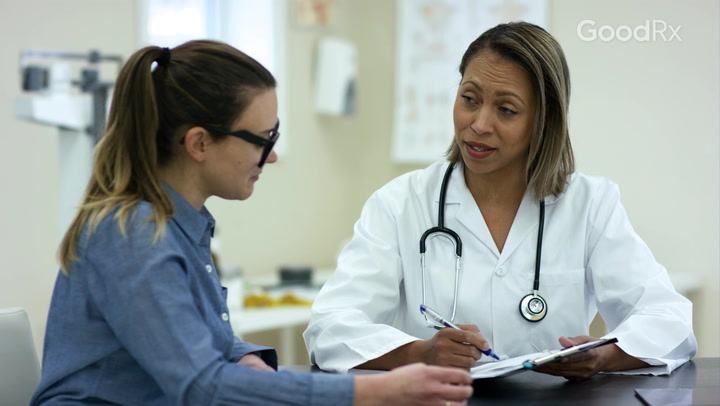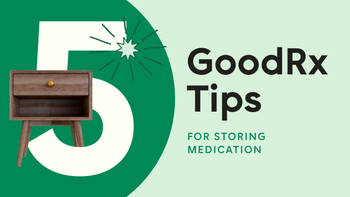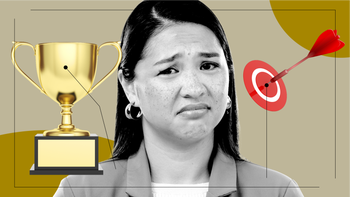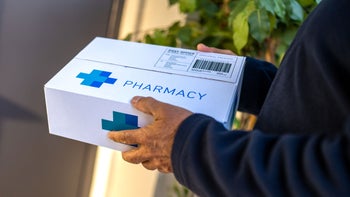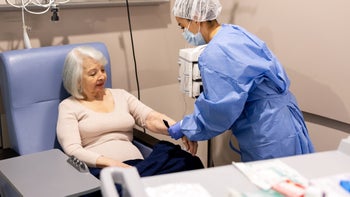
What is a Mail-Order Pharmacy? Here Are 5 Things to Consider
Key takeaways:
Mail-order pharmacies are a convenient way to receive prescriptions. They’re closed-door pharmacies that ship medications directly to your door. They typically operate through a pharmacy benefit manager (PBM).
You can use a mail-order pharmacy for one prescription, but you don’t have to use it for all of them. You can choose to use both mail-order and walk-in pharmacies, if you’d like.
Going to an in-person pharmacy may be more appropriate in certain cases. For example, if you need a short-term (acute) medication for an infection, your neighborhood drugstore will likely be the better option. It’s also favorable if you prefer a face-to-face relationship with your pharmacist.

A hectic schedule sometimes makes going to the pharmacy feel like a hassle. Even though it’s an important errand, wading through long lines and dealing with issues at the pickup window can be a downer.
Situations like these may have you thinking about your insurance company's mail-order pharmacy. It’s a closed-door pharmacy that ships medications directly to your home.
While mail-order pharmacies are convenient for some, it's not always smooth sailing. And savings aren't a sure thing. If you’re interested in using a mail-order pharmacy, here are the top five things you need to know.
Search and compare options
1. How do mail-order pharmacies work?
Most mail-order pharmacies operate through your insurer’s pharmacy benefit manager (PBM). Using a mail-order service that doesn’t have a contract with your insurer's PBM could result in coverage issues.
You can sign up for mail order by sending in your insurer’s mail-order form with your prescription. Another option is to have your prescriber phone or fax it in directly. You can usually submit refill requests online, over the phone, or through a mobile app.
2. How do I know if a mail-order pharmacy is right for me?
If you’d like your prescriptions delivered to you rather than having to pick them up at the pharmacy, mail order may seem like a no-brainer.
Depending on your insurer, discounts can also be significant — particularly when it comes to certain generic medications that you take regularly for chronic conditions, such as diabetes or high blood pressure. For those medications, you may be able to order a 90-day supply of some drugs for a co-payment of just a few dollars — or even $0, including free shipping, in some cases.
But before signing up, you’ll want to make sure you’ll benefit. That means comparing what your insurer’s mail-order pharmacy will charge (including shipping) with your local pharmacy’s prices.
Many insurance companies offer 90-day fills at local pharmacies for similar prices to mail-order pharmacies. For example, if Caremark is your PBM, you likely can purchase a 90-day fill at a CVS for the same price as a mail-order fill. Check with your individual health plan to see where you can get 90-day fills at the best rates.
Changing pharmacies: Want to transfer your medication to or from a mail-order pharmacy? Here’s the step-by-step process.
Specialty pharmacy shipments: Here’s a roundup of pharmacist-backed tips for getting a specialty medication delivered by mail.
Medication containers: Some medications are dispensed in pharmacy vials, while others remain in their original manufacturer containers. Discover why this small detail in packaging choice matters.
3. How is my insurance plan’s mail-order pharmacy different from an online pharmacy?
It’s easy to confuse mail-order pharmacies and online pharmacies. But the only similarity is that both ship medicines directly to your home.
Mail-order pharmacies operate through your health plan and require that you have one particular kind of insurance. By comparison, online pharmacies tend to operate like an online drugstore. They are separate entities from your PBM, and they may or may not accept your insurance.
Good to know: Every online pharmacy has different policies. Contact the pharmacy that you’re interested in to see if they accept your insurance. Also ask if they keep your preferred medication(s) in stock.
4. When should I stick to my local retail pharmacy?
If your medications are reasonably priced at your local retail pharmacy, you have a good relationship with the pharmacy staff there, and you’re happy with the pharmacy’s service, there may be no need to change.
Chain and big-box stores may offer generics at discounted prices without insurance. Walmart, for example, offers a 90-day supply of dozens of generics for only $10.
Since mail-order pharmacies typically ship 90-day supplies of medications at a time, and since they often take about a week to be delivered, mail-order may not be for you if you need a prescription immediately or have a prescription that only requires a few doses. For example, this may include post-surgery medications or antibiotics for an infection.
What’s more, mail-order pharmacies have pharmacists on staff ready to assist you and answer questions. But if you prefer a more personal, face-to-face relationship with a pharmacist, stick with a walk-in pharmacy.
5. What are the downsides to using a mail-order pharmacy?
First and foremost, errors in communication.
For instance, mail-order prescriptions may not always arrive on time, which can be dangerous for people who rely on life-saving medications. To avoid delays, make sure you set up orders at least 2 weeks before you’ll run out of your medications if you don’t have automatic refills.
The opposite problem can happen too. Mail-order pharmacies might auto-renew your prescriptions without confirming if you’re still taking a drug or whether your dosage has changed. Thankfully, Medicare Part D drug plans require mail-order pharmacies to get the OK from a medication recipient or caregiver before shipping a new prescription or refill.
Also, with any type of delivery service, there’s also the chance your package could be lost, stolen, or damaged in the mail. Mail-order programs will try to prevent that by using protective packaging, but in the event that your medications are damaged or lost, call your pharmacy immediately for a replacement.
Safety tip: If you get some of your medications via mail order and others at a walk-in pharmacy, be sure to let each pharmacy know about all of the medications you’re taking. This will allow your pharmacist to check for potentially dangerous drug interactions. Most pharmacy systems aren’t connected to each other, especially if they’re different companies.
Optimizing mail-order pharmacy services: How to make the most of your prescription delivery benefits
As with any service, there are ways to maximize the value of your mail-order pharmacy.
Here’s a summary of tips to make the most of your prescription delivery benefits:
Synchronize your deliveries: By asking your pharmacist to coordinate the arrival of your medications, you can ensure you receive them all at once (or in fewer shipments than normal).
Use the mobile app, if available: Some pharmacies offer mobile apps that allow you to conveniently order refills and track deliveries right from your smartphone.
Review your formulary: Familiarize yourself with the formulary of your mail-order pharmacy (and insurer) to understand which medications are preferred.
Review your plan’s fine print: See if any of your prescriptions are actually cheaper through a local pharmacy (instead of mail order).
Find out how to get free delivery: Ask your pharmacy staff if you need to take any extra steps to avoid shipping fees.
Look into medication therapy management (MTM): Ask your pharmacist if they offer MTM services, which help optimize your medication regimen and ensure you’re getting the most benefit from your prescriptions.
Ask about specialty pharmacy services: Some mail-order pharmacies, but not all, offer specialty medications.
Ask questions in a private setting: One con of some traditional pharmacies is their public setting, making it hard to work up the courage to ask sensitive medication questions. But working with a mail-order pharmacy allows you to have these discussions in private over the phone.
Does GoodRx do mail order?
Yes. With GoodRx Gold, you can get prescriptions mailed straight to your doorstep while also saving on prescription costs. Close to 1,000 medications are available with free shipping. You can also get a free 30-day trial.
The bottom line
Mail-order pharmacies are a convenient way to get your prescriptions filled. They’re typically connected to your insurance company’s pharmacy benefit manager. Most mail-order pharmacies can deliver medications in just a few days, and many offer savings on bulk quantities of medication (typically 90-day supplies).
Mail-order pharmacies come with some downsides, too. There are occasional issues with medications being lost or damaged in transit. They’re also not ideal for acute medications that you need filled quickly, such as an antibiotic.
Your prescriber can help you figure out the best place to fill your prescriptions.
Why trust our experts?



References
Centers for Medicare & Medicaid Services. (2024). Medication therapy management.
Pharmaceutical Care Management Association. (n.d.). Mail-service pharmacy.
U.S. Food and Drug Administration. (2022). How to buy medicines safely from an online pharmacy.
Walmart. (n.d.). Walmart’s low-cost prescription program.
Was this page helpful?
Related Articles
Browse medications
View AllResearch prescriptions and over-the-counter medications from A to Z, compare drug prices, and start saving.





















